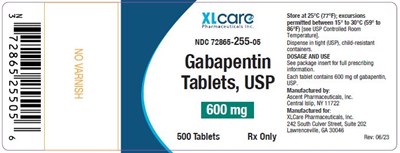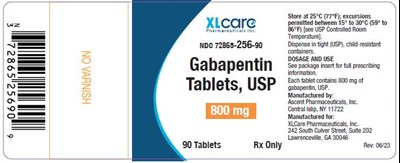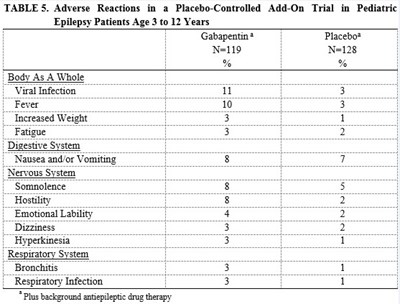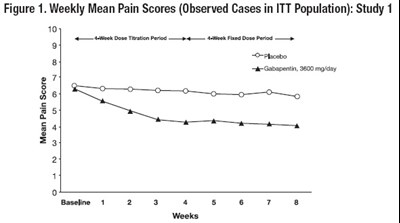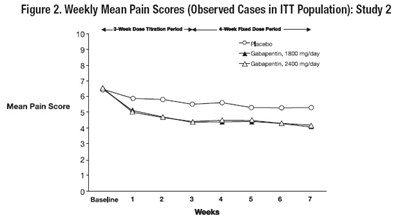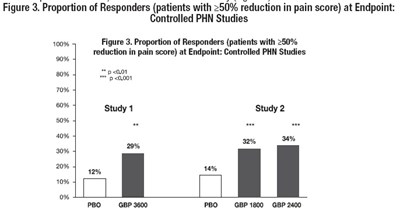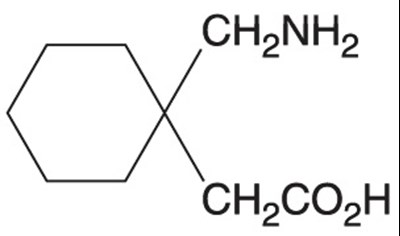Product Images Gabapentin
View Photos of Packaging, Labels & Appearance
Product Label Images
The following 17 images provide visual information about the product associated with Gabapentin NDC 72865-256 by Xlcare Pharmaceuticals, Inc., such as packaging, labeling, and the appearance of the drug itself. This resource could be helpful for medical professionals, pharmacists, and patients seeking to verify medication information and ensure they have the correct product.
500-800 - 800 500
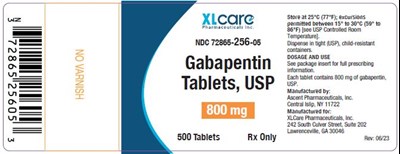
XLcare is a medication called Gabapentin, available in tablet form. Each package contains 500 tablets and can only be obtained with a prescription. The recommended storage temperature is between 15-30°C (59-86°F) and it should be kept in a child-resistant container. The dosage and usage instructions can be found in the package insert. The medication is manufactured by Ascont Pharmaceuticals in WY 11722 and by HLCare Pharmaceuticals in GA 30046, as indicated by the addresses provided.*
sideeffects - Sideeffects
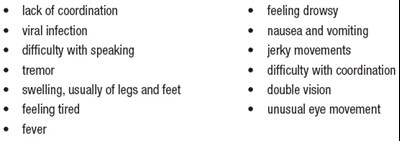
This text appears to describe various symptoms that may be associated with a medical condition. These symptoms include a lack of coordination, viral infection, difficulty with speaking, tremor, swelling (usually of the legs and feet), feeling tired, fever, feeling drowsy, nausea and vomiting, jerky movements, difficulty with coordination, double vision, and unusual eye movement. It is important to note that without more context or additional information, it is difficult to determine the specific condition or diagnose any specific illness. It is recommended to consult a healthcare professional for a proper evaluation and diagnosis.*
Table-1 - Table1
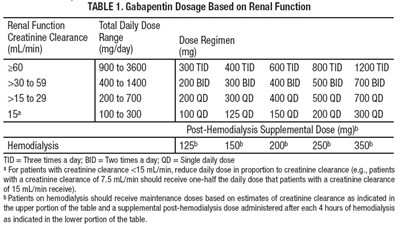
Table 1 provides the recommended dosage of gabapentin based on renal function. The table includes different dosage regimens for various levels of creatinine clearance measured in mL/min. The total daily dose ranges from 900 to 3600 mg for patients with a creatinine clearance of 60 mL/min or higher. For patients with a creatinine clearance between 30 and 59 mL/min, the total daily dose ranges from 400 to 1400 mg. Patients with a creatinine clearance between 15 and 29 mL/min are recommended a total daily dose of 200 to 700 mg. Additionally, the table provides a supplemental post-hemodialysis dose for patients on hemodialysis. The dosage frequencies are indicated as TID (three times a day), BID (two times a day), and QD (single daily dose). It is important to adjust the daily dose proportionally for patients with a creatinine clearance below 15 mL/min.*
Table-3 - Table3
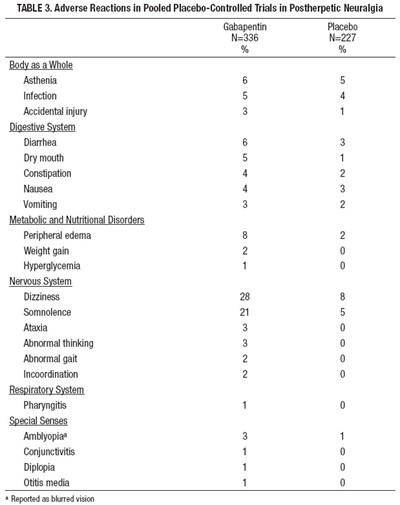
TABLE 3. Adverse Reactions in Pooled Placebo-Controlled Trials in Postherpetic Neuralgia. The table shows the percentage of adverse reactions reported in patients taking Gabapentin compared to those taking a placebo. The adverse reactions are categorized by different body systems, including Body as a Whole, Digestive System, Metabolic and Nut, Nervous System, Respiratory System, and Special Senses. Some of the reported adverse reactions include asthenia (6% in Gabapentin vs. 5% in Placebo), infection (5% in Gabapentin vs. 4% in Placebo), diarrhea (6% in Gabapentin vs. 3% in Placebo), dizziness (28% in Gabapentin vs. 8% in Placebo), and blurred vision (reported as an adverse reaction).*
Table-4 - Table4
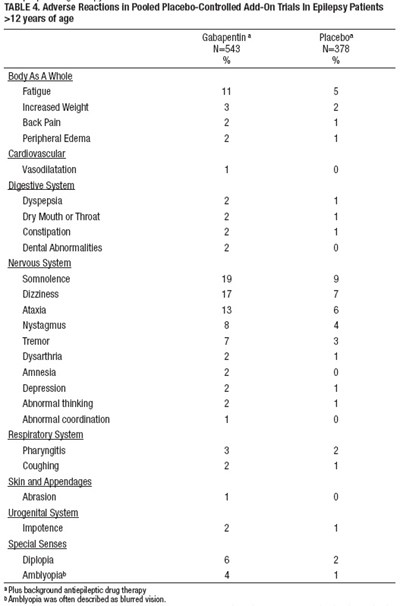
Description: This text provides a table of adverse reactions observed in pooled placebo-controlled add-on trials in epilepsy patients who are 12 years of age or older. The table includes the percentage of patients experiencing each adverse reaction for both the gabapentin treatment group and the placebo group. Adverse reactions are categorized by body system, including body as a whole, digestive system, nervous system, respiratory system, skin and appendages, urogenital system, and special senses. The text also mentions that amblyopia, a condition characterized by blurred vision, was frequently reported in the trials.*
Table-6 - Table6

This text provides information on controlled studies conducted on Gabapentin as a treatment for PHN (postherpetic neuralgia). It includes details such as the duration of the studies, the dosages of Gabapentin administered, and the number of patients involved in each study. Study 1 lasted 8 weeks and had a target dose of 3600 mg/day, with 113 patients receiving Gabapentin and 116 patients receiving a placebo. Study 2 lasted 7 weeks and had varying doses of 1800 mg/day and 2400 mg/day, with 223 patients receiving Gabapentin and 111 patients receiving placebo. In total, there were 336 patients receiving Gabapentin and 221 patients receiving placebo in the two studies.*
clcr - clcr

This text appears to be a formula for calculating a value based on age, weight, and serum creatinine level. The formula involves subtracting the age (in years) from 140, then comparing it to the weight (in kilograms) multiplied by 0.65 for female patients. Additionally, the formula includes multiplying the serum creatinine level (in mg/dL) by 72. The purpose or specific context of this formula is not provided in the text.*
Figure-4 - figure4
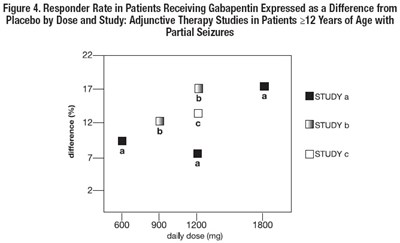
Figure 4 shows the responder rate for patients receiving Gabapentin as adjunctive therapy in the treatment of partial seizures. The data is expressed as a difference from the placebo, categorized by dose and study. The patients included in the study were over 12 years of age. The figure includes a graph with different doses of Gabapentin (600, 900, 1200, 1800 mg) as the daily dose and the corresponding responder rate. Unfortunately, the remaining text is not understandable.*
* The product label images have been analyzed using a combination of traditional computing and machine learning techniques. It should be noted that the descriptions provided may not be entirely accurate as they are experimental in nature. Use the information in this page at your own discretion and risk.
